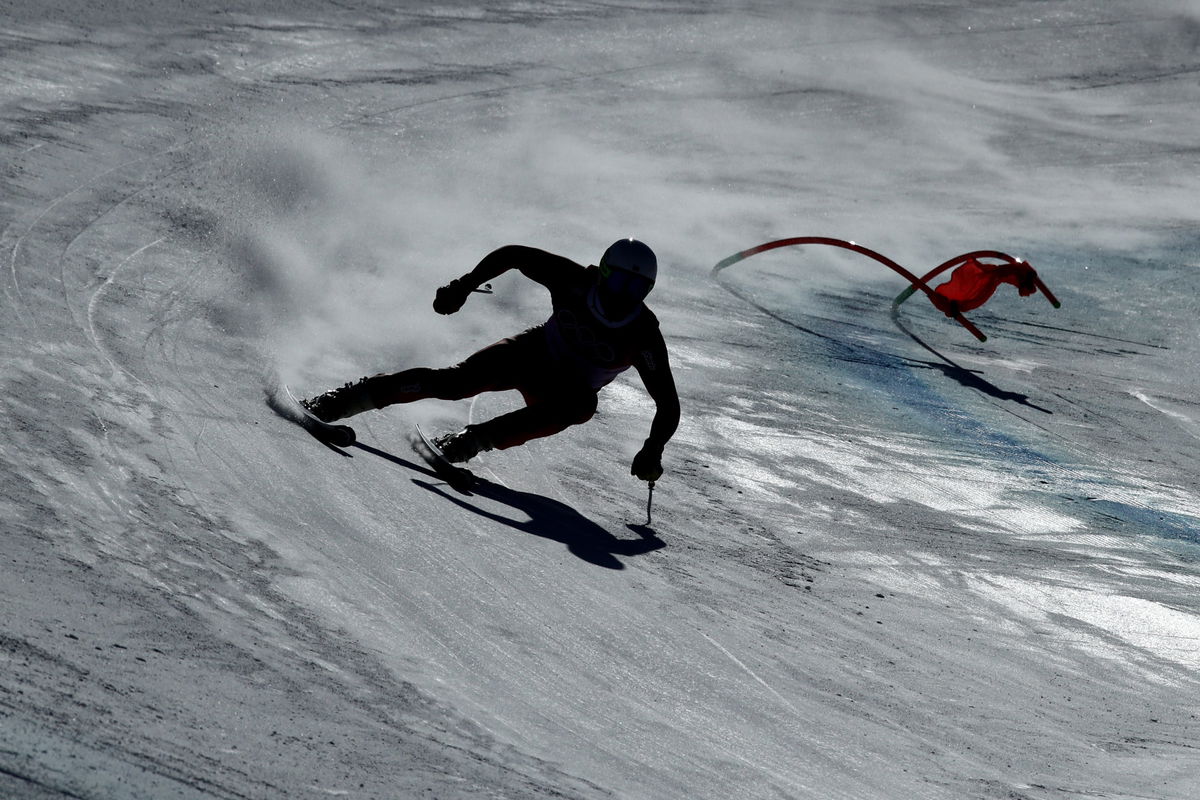
Getty
PYEONGCHANG-GUN, SOUTH KOREA – FEBRUARY 15: Kjetil Jansrud of Norway makes a run during the Men’s Downhill on day six of the PyeongChang 2018 Winter Olympic Games at Jeongseon Alpine Centreon February 15, 2018 in Pyeongchang-gun, South Korea. (Photo by Clive Mason/Getty Images)

Getty
PYEONGCHANG-GUN, SOUTH KOREA – FEBRUARY 15: Kjetil Jansrud of Norway makes a run during the Men’s Downhill on day six of the PyeongChang 2018 Winter Olympic Games at Jeongseon Alpine Centreon February 15, 2018 in Pyeongchang-gun, South Korea. (Photo by Clive Mason/Getty Images)
Alpine Skiing is a sport of swiftness and precision. While the movements embrace the skills, it is also a sport that heavily relies on external factors. The slope of the mountain, the quality of the snow, and of course the persisting climate; all contribute to the finesse with which the sport runs. Now, with the Audi FIS Alpine Ski World Cup 2023/24? taking its course, the athletes stand to consider the shifting patterns.
Watch What’s Trending Now!
In October 2023, the five-month-long World Cup made its presence for the season. As the winter announces its presence, skiers bring up their poles. However, with rising concerns about global warming, the wrong condition of snow could play a role unforeseen for the athletes competing for the Crystal Globe.
ADVERTISEMENT
Climate change affecting skiing
A rise in temperature, greener slopes, and a change in precipitation could mean an unwanted shift in the snow consistency. Nevertheless, in the wake of global warming,? a multitude of slalom arenas witnessed a steady loss in snow. However, declining snow isn’t the only problem for the Ski World Cup and the industry in general. The harsh weather and extreme conditions have also pushed toward the cancellation of shows on multiple occasions.

Getty
ZHANGJIAKOU, CHINA – FEBRUARY 20: Natalia Nepryaeva of Team ROC leads the field during the Women’s Cross-Country Skiing 30k Mass Start Free on Day 16 of the Beijing 2022 Winter Olympics at The National Cross-Country Skiing Centre on February 20, 2022 in Zhangjiakou , China. (Photo by Patrick Smith/Getty Images)
NSIDC research scientist Twila Moon, who is a skiing enthusiast herself, states ideal situations for skiing include conditions not too cold. She further added, ?but cold enough to build up powder. Having dry spells, or warm weather, or rain on snow are very problematic.? Moon stated, ?Of course, there?s the year-to-year luck of the weather, but it?s now happening against a background trend of warming temperatures.?
ADVERTISEMENT
And the data backs the stance right up. A study conducted over the past decades ranging from the 1900s to 2016 showcases that there has been an increase in the land temperature of over 95% of the nation. Interestingly, as the sport suffers the wrath of the shifting patterns, it may fail to realize the cycle it has been a part of.
Top Stories
Forced to Leave FOX, Cowboys Legend Troy Aikman Says ESPN Is Like ‘U.S. Government’ & Clearly Distinguishes the Two Networks

Arrest For Shaquille O’Neal’s Stolen Range Rover Made But More Bad News Awaits

Who Is Paige Shiver? All About Michigan Football Staffer & Daughter of Veteran Bears Scout Jeff Shiver

Mike Tomlin Finds $180 Million Aaron Rodgers Replacement After QB’s Retirement Announcement: Steelers Insider

Lakers’ Gabe Vincent Dishes on LeBron James, Luka Doncic’s Sacrifices, Role on the Team and More (Exclusive)

What Settlement Agreement Have Michael Jordan & NASCAR Reached? Everything to Know From Evergreen Charters to Payout

ADVERTISEMENT
Environmental problems with the sport
When it comes to skiing, ski resorts are often the go-to spots for enthusiasts. The amenities a facility provides largely contribute to climate change. A study reports that the skiing industry tends to leave behind a huge carbon footprint.
Green Living Detective states impact on wildlife, deforestation, alpine vegetation, water use, and fossil fuel consumption as some of the downsides of the sport. While resorts stand as a highlight of the problems caused, the equipment required takes the next spot on the graph. However, the sport provides an alternative switch of materials like bamboo or recycled polyester. But despite all, the threat remains difficult to eliminate.
ADVERTISEMENT
A possible ‘no-snow’ future
The weather has given mankind several hints about the passing conditions of pre-existing climate stability. The extreme heat or rainfall, the increased smog and wildfires, or the hurricanes and winter storms, all have been a warning. And supposedly if the pattern keeps up, experts believe that the world will experience snowless winters as early as 2040. The increase in carbon emissions has been a leading cause of the decline in snowfall. However, if it persists, the future of snow in the world doesn’t look very promising.
Erica Siirila-Woodburn, a research scientist at Lawrence Berkeley National Laboratory, stated that the water in snowpack has declined by 20% since the mid-1950s. The report further adds that by the second half of the century, the nation is likely to witness over 70% of winters with no snow. The issue has the potential to bear a billion-dollar impact lying weight over reliability and the ecosystem.
ADVERTISEMENT
The survival of ski resorts
According to reports, even a 2 percent increase in temperature could lead to a lack of snow in the ski resorts. But while one awaits its arrival, the European ski industry has already stood to witness the decline. The decreased snow cover has obliged organizations to adopt the measures of artificial snowmaking. A study conducted across 2000 ski resorts shows that over 50% of these resorts lay under a high risk of snow supply shortage.
Taking into consideration all factors, the study reports that 2090 seems to be the deadline for the existing ski resorts. ?Virtually all locations are projected to see reductions in winter recreation season lengths, exceeding 50% by 2050 and 80% in 2090 for some downhill skiing locations,? a report reads. The continuous cycle of the industry is projected to hit the sport of up to $2 billion by the year 2090.
ADVERTISEMENT
Watch this story:?WHO IS THE RICHEST WINTER OLYMPIAN? SHAUN WHITE, LINDSEY VONN, MIKAELA SHIFFRIN, AND OTHER?S NET WORTH COMPARISON
ADVERTISEMENT
ADVERTISEMENT
ADVERTISEMENT

